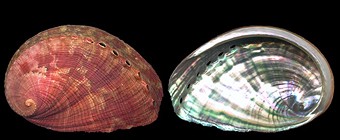 |
|
| CASABLANCA (spot 1): |
1m deep, under rocks. 72mm.
The dorsal surface is covered with flat spiral cords, a bit like on the subadult specimen from Groix island (p.1, #4). Here is the famous red.
|
|
|
| | | |
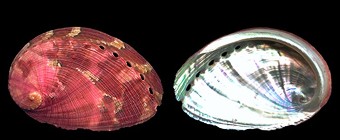 |
|
| CASABLANCA (spot 1): |
1m deep, under rocks. 53mm.
This exceptionnal pink-red is not the only typical feature of the area: the nacre, also, has changed. It is now more green than blue.
|
|
|
| | | |
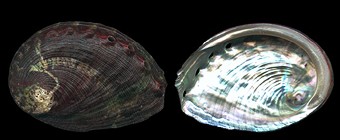 |
|
| CASABLANCA (spot 1): |
1m deep, under rocks. 48mm.
A smoother sculpture, a rounder ventral margin, a less excentred spire, a wider columella, and a chestnut color. This specimens shows completely different characters.
|
|
|
| | | |
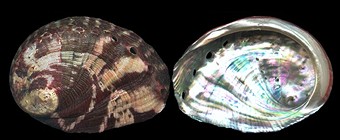 |
|
| CASABLANCA (spot 1): |
1m deep, under rocks. 47mm.
An other one from the same spot. The pattern is marbled. The spire,
the columella, are not those of a true tuberculata.
|
|
|
| | | |
 |
|
| SIDI ABED (spot 2): |
1-2m deep, under rocks. 83mm.
The ventral margin is straighter. The general draw is of a brittanic specimen, like those pictured in page 1. A heavy adult, and large for the area.
|
|
|
| | | |
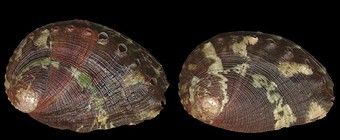 |
|
| SIDI ABED (spot 2): |
At low tide, under stones. 44-48mm.
Again the chestnut form, which seems to be quite constant in color, pattern and sculpture.
|
|
|
| | | |
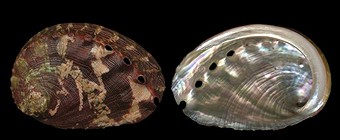 |
|
| SIDI ABED (spot 2): |
Same spot, at low tide under stones. 45,7mm.
The nacre is pale, of a silver blue. This marbled abalone is named, when it comes from Sénégal, marmorata Lin.
|
|
|
| | | |
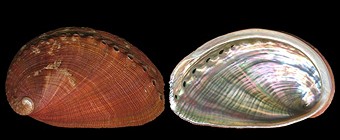 |
|
| AGADIR (spot 3): |
1m deep, at low tide, under stone. 70mm.
Orange to reddish, with poor pattern, elongate, with a rougher surface,
a greenish nacre: this one is a true tuberculata.
|
|
|
| | | |
 |
|
| AGADIR (spot 3): |
1m deep, at low tide, under stone. 60mm.
Specimens from this area are among the most beautiful of all tuberculata's. Their shape and sculpture are a bit like those of H. semiplicata.
|
|
|
| | | |
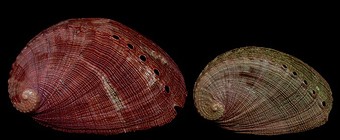 |
|
| TARFAYA (spot 4): |
1m deep, at low tide under rock. 43-56mm.
Here is again this special design from Morocco. There is a great difference between the two forms that cohabit here: the elongate and striated shell, and the polished, rounded chestnut abalone.
|
|
|
| | | |
 |
|
| TARFAYA (spot 4): |
1m deep, at low tide under rock. 36-41mm.
Purple shells are uncommon everywhere.
|
|
|
| | | |
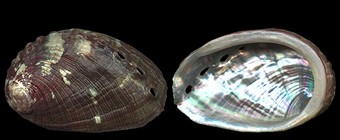 |
|
| ALMADIES (spot 5): |
1-2m deep, on rocks. 53mm.
Again a chestnut shell, more elongate than usual. The enlarged picture shows also a funny little specimen that was collected at the same place; this is an example of what Reeve named rosacea.
|
|
|













